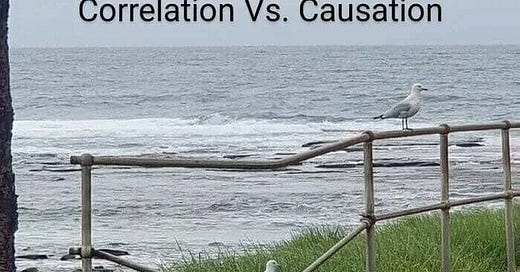This week I continue my discussion of Carl Sagan. This essay focuses on an unintended consequence of Sagan’s success – the rancor surrounding the important topics of climate change and COVID. You can read Part 1 here if you missed it.
It is clear that Carl Sagan had an impact on the culture at large. Given that he is viewed so favorably by so many people and it is widely accepted that he helped educate a generation on the wonders of science, why is it that there is so much hostility surrounding certain scientific topics. Don’t we all have the same appreciation for science?
Sagan’s writings likely had some influence on school systems. It is common these days for high schools to feature S.T.E.M. programs. These programs prepare students for degrees in science. But more importantly, they are supposed to teach the fundamentals of science. After 40 years of S.T.E.M., wouldn’t you expect there to be a more reasoned discussion about COVID and climate?
A new group of celebrity scientists have picked up where Sagan left off, scientists like David Suzuki, Michio Kaku and Neil deGrasse Tyson, to name a few. But I’m not sure they have the same aptitude as Sagan. I was dismayed, some years ago, when I first saw a promotional video for a Master Class taught by Neil deGrasse Tyson. In the opening, he states, “One of the great challenges is knowing enough about a subject to think you’re right, but not enough about the subject to know you’re wrong.” He emphasizes that last part looking into the camera and pointing. It was as if he were scolding those listening to him. I just can’t image Carl Sagan ever taking that tone. Where Sagan was thoughtful and encouraging, deGrasse Tyson seems like a stern taskmaster. Does deGrasse instill dogma, where Sagan engenders curiosity?
To answer this, conduct a little test. Regardless your position on COVID or climate, I guarantee at least three examples of ‘stupid’ came to mind. One of you just rolled your eyes thinking back to a family dinner where an uncle was going on about how masks were ineffective against the spread of COVID. Another reader (maybe it’s you) reacted with disgust recalling that some scientists say the Sun is not the cause of recent warming on Earth. Still others remember the recklessness of certain governments that didn’t follow WHO guidelines during the pandemic. Finally, some of you are anxious just thinking about the lack of progress on all those Net Zero pledges various governments have made. All of these reactions are supposedly supported by science. But how can they be supported by science when clearly there are contradictions between the positions?
On-line, these topics have spawned a kind of sub-culture where short videos, memes and graphs are substituted for actual discussion. TikTok, Twitter and other social platforms are filled with disturbing videos of young adults throwing soup at artwork or gluing themselves to the road because of ‘The Science’. We are invited to laugh at a video of someone driving alone a car wearing a mask. People are berated in the comment section for mistaking correlation with causation. Budding epidemiologists used their extra time during lockdowns to lecture us all on the difference between in vivo and in vitro medical studies. Quora and similar forums are filled with graphs pulled from scientific papers that somehow ‘prove’ a person’s point. Isn’t science clear on the most important subjects of the day?
It seems that COVID and climate change have a way of bringing out the ‘fight’ in people. There are so many blogs, peer-reviewed papers and analysis of the issue(s), it’s not hard to convince oneself that science is on ‘your’ side, no matter which side one takes. This has generated two different reactions. Some people feel the need to ‘defend’ science against pseudo-science and misinformation. The other side views the conflicting information as a sign that they are being bamboozled or there’s some kind of conspiracy.
The sad truth is that dialog surrounding climate change and pandemics has created a stifling atmosphere that can only hurt the pursuit of science. There are questions that just can’t be asked without raising an eyebrow. It feels like teenagers and young adults are developing a “stay in your lane” mentality, rather than cultivating a broad curiosity across many subjects. They’ve been discouraged from questioning and encouraged to protect the established narrative - “follow the science”. It is as if science is developing an orthodoxy with scientist playing the same roll Cardinals played in the Catholic Church of the Middle Ages. That is not the direction Carl Sagan advocated in his writings.
Carl Sagan was effective elevating science in the ‘public’ mind. But obviously something is missing otherwise we wouldn’t have the incredible friction. His method of telling great stories about scientists and their discoveries apparently only goes so far. It cannot instill an appreciation of science as a process, its place in the culture and its limitations, as evident by the toxic culture. Carl Sagan’s approach to popularizing science is responsible for this unintended consequence. I was baffled by all this until a 2017 article by Robert Tracinski helped me see how Sagan’s message missed the mark. I will explore this in next week’s essay.




